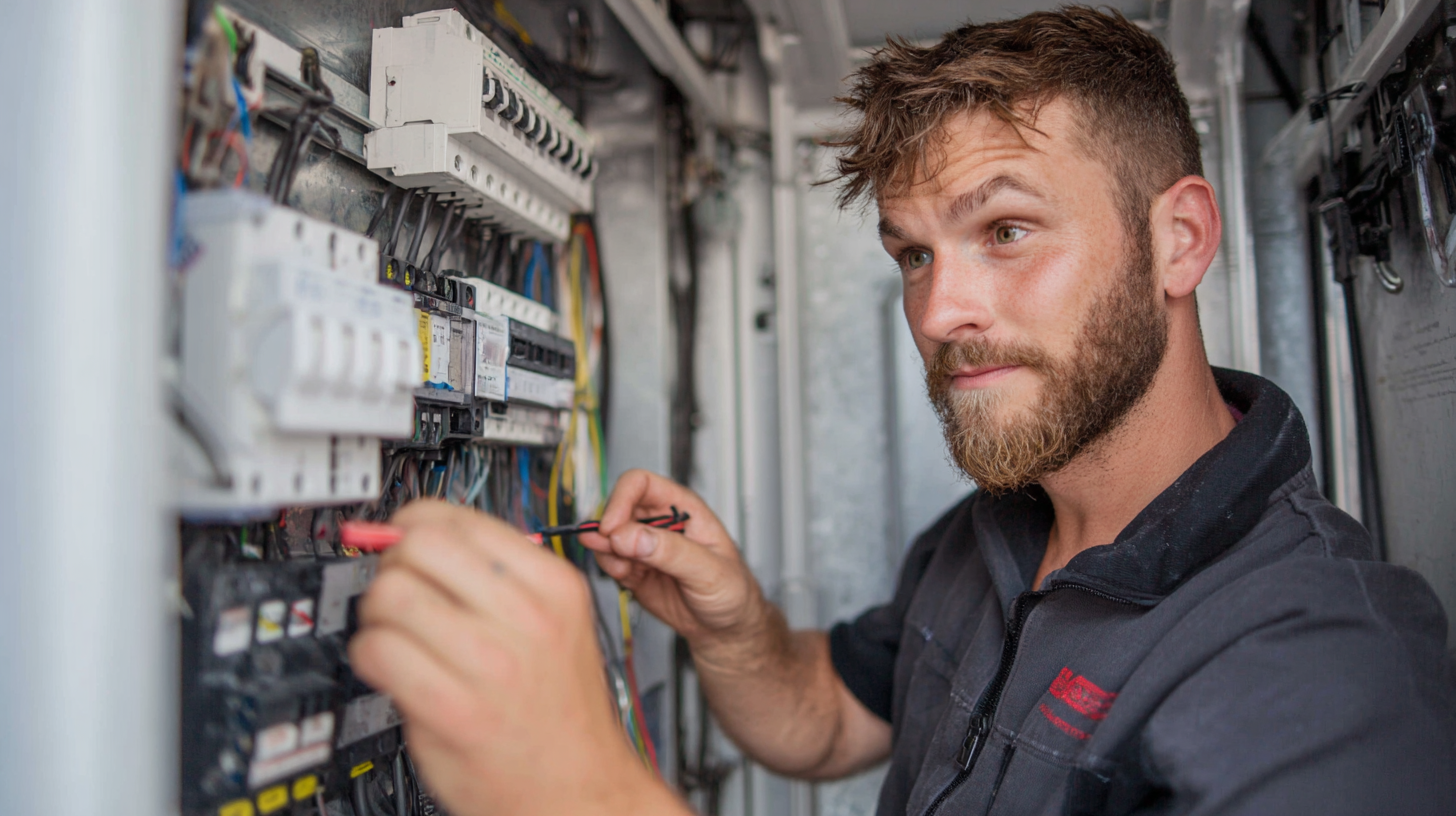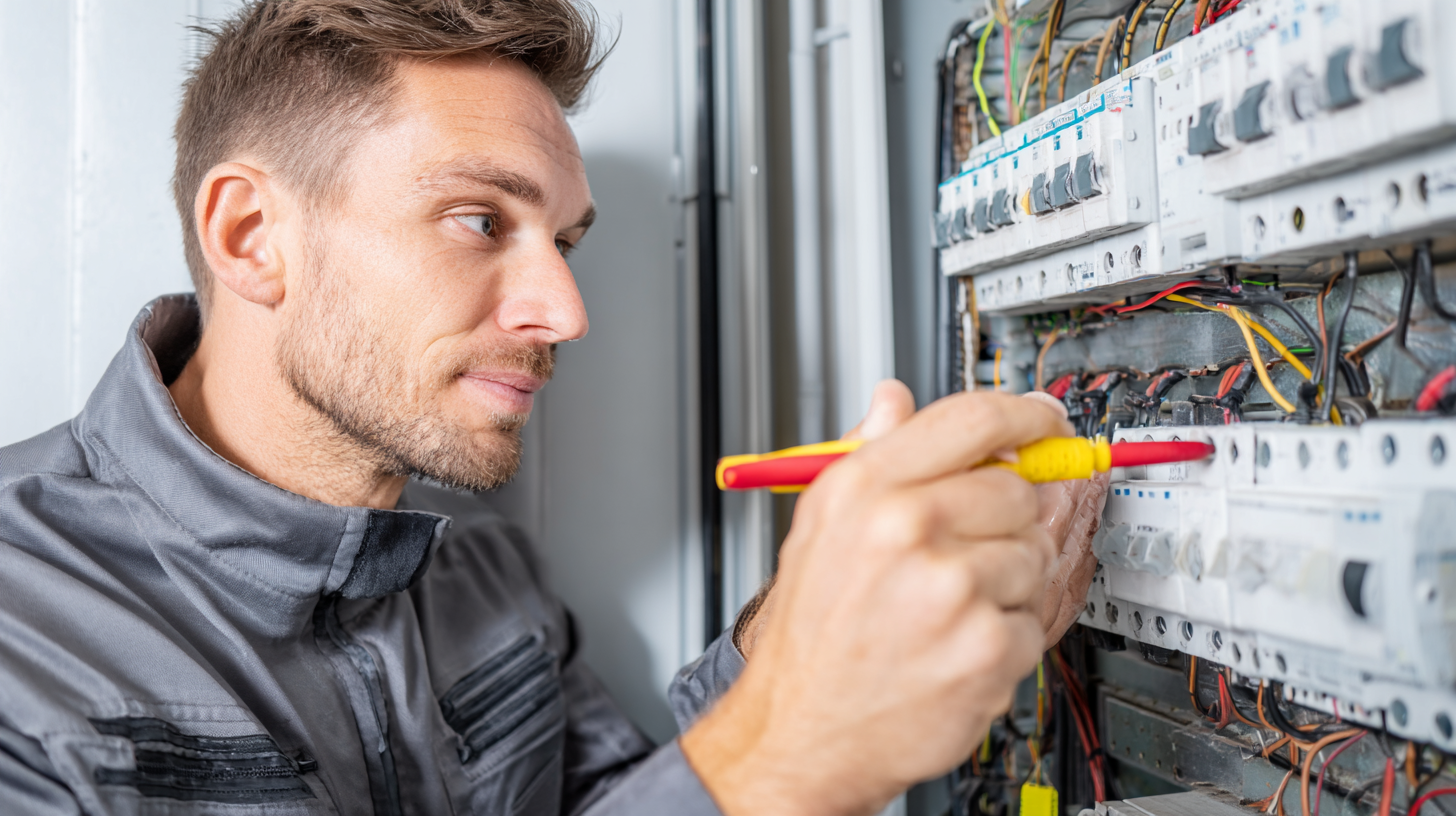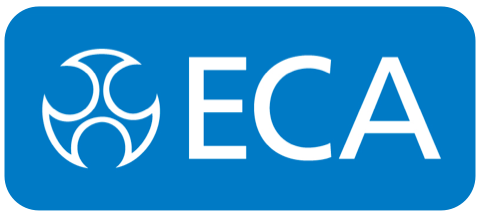- Home
- News
5 Essential Tips for Conducting the Best Electrical Appliance Checks
In today's fast-paced world, ensuring the safety and efficiency of our electrical appliances has become paramount. According to the latest market analysis, the global electrical appliance industry is projected to reach a staggering $1.2 trillion by 2025, highlighting the increasing reliance on these devices in our daily lives. With such substantial investments, the importance of regular Electrical Appliance Checks cannot be overstated. These checks not only extend the lifespan of appliances but also safeguard against potential hazards that may arise from faulty wiring or improper use. By incorporating essential maintenance practices, consumers can significantly reduce energy costs and enhance operational efficiency. This blog presents five essential tips that will help you conduct the best Electrical Appliance Checks, ensuring your home remains safe and your appliances perform optimally in line with industry standards.

Understanding the Importance of Regular Electrical Appliance Inspections
Regular inspections of electrical appliances are crucial for ensuring safety, efficiency, and longevity. Just as regular health check-ups are vital for maintaining personal well-being, performing routine electrical appliance checks can prevent malfunctions that might lead to accidents or increased energy consumption. Studies show that regular inspections can reduce appliance failure rates by up to 30%, highlighting their importance in both maintaining appliances and contributing to a more sustainable circular economy.
Here are a few essential tips to enhance the efficacy of your electrical appliance checks:
- **Establish a Schedule**: Create a regular inspection schedule based on manufacturer recommendations and usage frequency. This practice not only prolongs appliance life but also ensures that issues are identified before they escalate into significant problems.
- **Focus on Energy Efficiency**: During inspections, pay attention to energy ratings and consumption. This helps identify appliances that may need maintenance or replacement, ultimately reducing energy costs and environmental impact.
- **Document Findings**: Keep a record of inspections and any maintenance performed. This baseline data can be crucial for reliability optimization and helps track trends over time, making it easier to address recurring issues.
Through systematic inspections, homeowners can not only protect their investments but also contribute to a more efficient and eco-friendly living environment.
Key Tools and Equipment for Effective Electrical Checks
When it comes to conducting thorough electrical appliance checks, having the right tools and equipment is crucial. Start with a digital multimeter, a versatile device that measures voltage, current, and resistance. This will allow you to troubleshoot various appliances effectively. To enhance your inspections, consider having an insulation resistance tester. This tool helps identify any potential electrical failures by measuring the integrity of an appliance's insulation.

Another essential item is a clamp meter, which enables you to measure current flow without needing to break the circuit. This is especially useful for appliances hard to access or whose plugs are difficult to remove. Additionally, ensure you have a good set of screwdrivers, pliers, and wire strippers handy. These basic tools will facilitate easy disassembly and allow for a thorough cleaning of the internal components, which can extend the lifespan of your appliances. With these tools in your arsenal, you’ll be well-equipped to perform comprehensive electrical checks safely and efficiently.
Identifying Common Signs of Electrical Malfunction in Appliances
When it comes to ensuring the safety and efficiency of your electrical appliances, being vigilant about potential signs of malfunction is crucial. One key area to monitor is unusual smells, such as burnt plastic or a musty odor. These can indicate overheating or mold within the appliance, both of which could pose serious risks. Regular checks not only help identify these warning signs but can also prevent hazardous situations, such as electrocution in wet areas like hot tubs, where faulty wiring can lead to tragic accidents.
Another essential tip is to be aware of any unexpected noises or irregular operation. For example, if your air conditioner starts making grinding or buzzing sounds, it may signal a mechanical issue that requires immediate attention. Additionally, keep an eye on the performance of appliances; if they suddenly require more power or exhibit erratic behavior, it may be time to investigate underlying electrical problems or consider replacement. Staying proactive about these checks can help mitigate dangers associated with faulty appliances and ensure a safer home environment.
Step-by-Step Guide for Safe and Thorough Appliance Testing
When it comes to ensuring safety and efficiency in our homes, conducting electrical appliance checks is crucial. This step-by-step guide will help you navigate the process of appliance testing thoroughly and safely. According to a report by the Electrical Safety Foundation International, nearly 50,000 home electrical fires are reported each year in the U.S. alone, often due to faulty appliances. Therefore, regular checks can significantly reduce risks associated with electrical failures.
One essential tip for appliance testing is to inspect cords and plugs for any signs of wear or damage before plugging them in. A frayed cord can lead to short circuits or electrical shocks, putting you and your family at risk. Additionally, perform a functionality test on appliances at least once a month. This includes checking that all settings respond correctly and that there are no unusual sounds, overheating, or smells. Reports indicate that about 70% of electrical appliance issues can be identified through these basic checks.

Another vital aspect of conducting appliance tests is to keep a record. Document any issues or service performed on your appliances. This not only helps you track maintenance over time but can also provide insight into recurring problems or the need for replacements. The U.S. Consumer Product Safety Commission highlights that regular maintenance can extend the life of your appliances by up to 30%, promoting a safer living environment.
Best Practices for Documenting and Reporting Inspection Results
When it comes to conducting electrical appliance checks, thorough documentation and reporting of inspection results are imperative for maintaining safety and compliance. To begin with, ensure that each inspection is meticulously recorded. Use standardized forms to document key information such as appliance identification, inspection dates, test results, and any observations made during the check. This not only provides clarity for future references but also helps in identifying recurring issues that may require attention.
Another best practice is to integrate modern tools that facilitate real-time reporting. Leveraging digital solutions can streamline the documentation process, enabling inspectors to instantly report their findings. This promotes transparency and accountability, especially in environments where multiple team members are involved. Furthermore, employing advanced data analytics can enhance the understanding of patterns within inspection results, ultimately leading to improved maintenance strategies over time.
Consider also engaging in ongoing training that emphasizes the importance of accurate documentation and effective communication of findings. By equipping your team with the right skills and knowledge, you can significantly augment the reliability of your electrical appliance checks, making it easier to address safety concerns and operational efficiency.
5 Essential Tips for Conducting the Best Electrical Appliance Checks - Best Practices for Documenting and Reporting Inspection Results
| Tip No. | Tip Description | Inspection Frequency | Documentation Method |
|---|---|---|---|
| 1 | Visual Inspection for Damage | Monthly | Photos and Notes |
| 2 | Testing Electrical Connections | Quarterly | Checklists |
| 3 | Checking for Overheating | Biannually | Testing Reports |
| 4 | Grounding Checks | Annually | Inspection Logs |
| 5 | Functional Testing After Repairs | As Needed | Service Reports |
